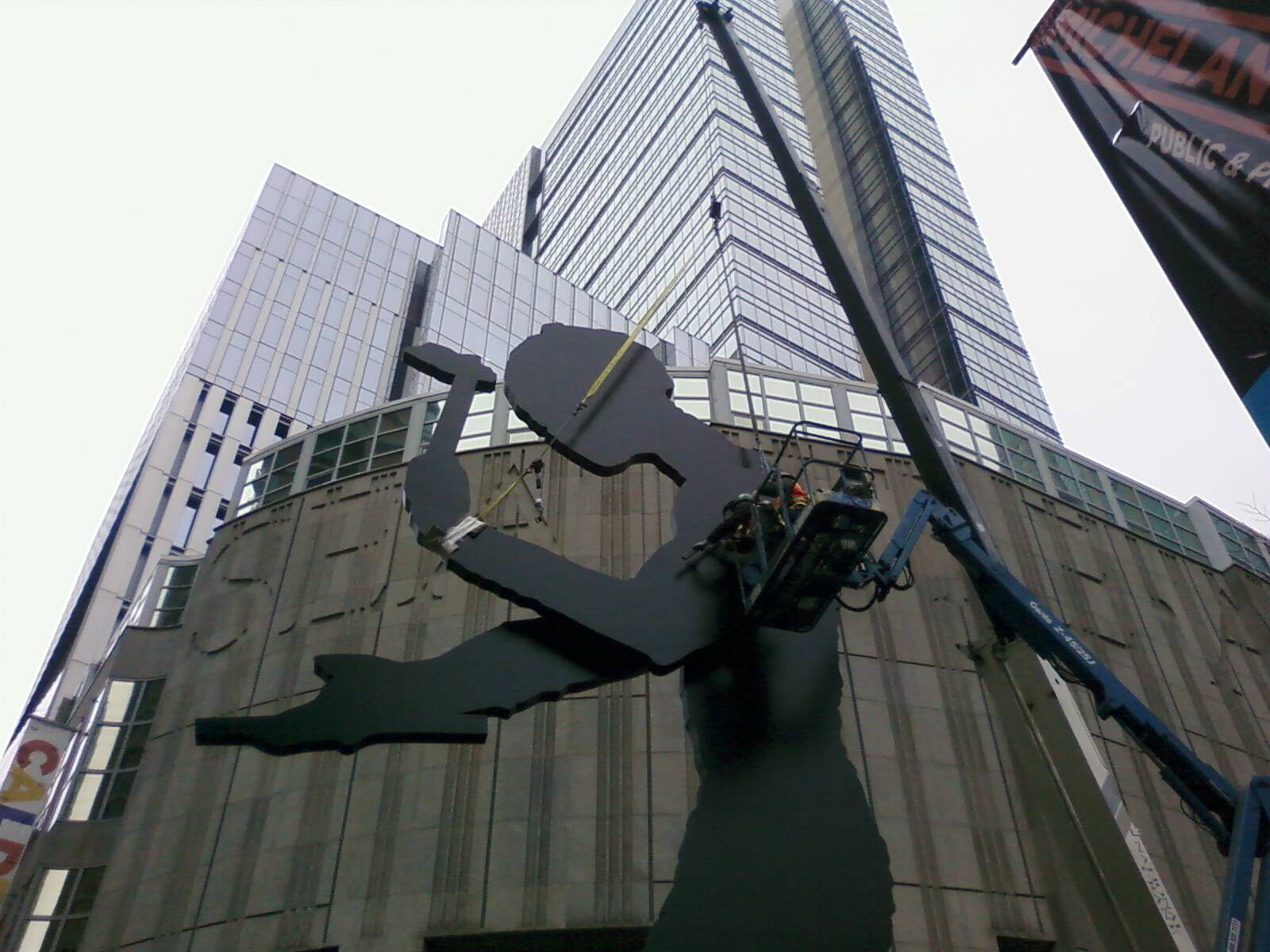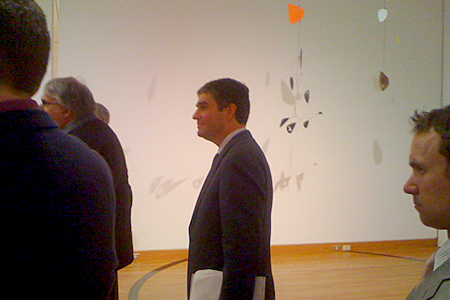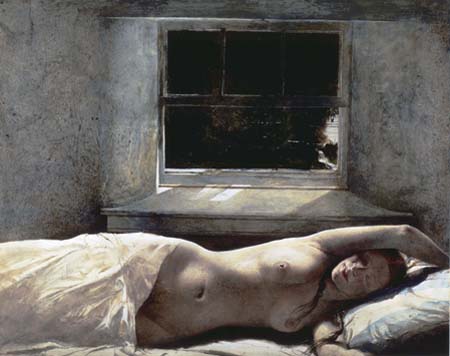Ukiyo-e (“pictures of the floating world”) come to Seattle Asian Art Museum
Today, members of the media got a sneak preview of Fleeting Beauty: Japanese Woodblock Prints at the Seattle Asian Art Museum. The exhibition opens to the public tomorrow.
Today, members of the media got a sneak preview of Fleeting Beauty: Japanese Woodblock Prints at the Seattle Asian Art Museum. The exhibition opens to the public tomorrow.
It’s amazing how many visitors to Alexander Calder: A Balancing Act have been drawn to the cases of tiny little sculptures, which seem to mirror what Calder was doing in a larger scale. At first glance, many think that these must be studies or models for later, larger works. It would be easy to picture them recreated in a giant mobile or big outdoor sculpture, but they are actually unique works of art in the own right.
Calder often played with variations on certain themes – such as red tripod bases with arcing cantilevers on top – in a range of sizes and media. It’s fun to look closely at these tiny Calders, as you can often discern the actual hand-pounding and forming of metal and the strokes of the master artist’s paintbrushes.
In this video, collector Jon Shirley talks a little more about these surprising pieces.
– Nicole Chism Griffin, SAM PR
“I think all Calders tend to make someone happy. That is the universal appeal of his art.” – Jon Shirley
Click on the video link below to hear more from Jon Shirley about the only adjustable Calder mobile ever made and what it’s like to live with Red Curly Tail (which has endured a snowball fight or two).
Alexander Calder: A Balancing Act closes on April 11th.
-Cara Egan, SAM PR
Photography inside a museum’s art galleries can be a touchy touchy issue. From conservation (yes, repeated “flashing” does damage art over time) to super serious legal matters (most 20th and 21st century art is under copyright by an artist or an estate), the issues surrounding the seemingly simple act of taking a picture are complex and abundant.
PHEW! It’s incredibly hard to keep good news under wraps, especially when it’s as big as Picasso: Masterpieces from the Musée National Picasso, Paris. And now, thank goodness, the word is out.
It’s Art Museum Directors gone wild as Max Anderson, director of the Indianapolis Museum of Art, and E. John Bullard, director of the New Orleans Museum of Art, break out the art historical smack talk, wagering art-against-art in the race for Super Bowl XLIV.
Tyler Green’s coverage of the heated negotiations is a must-read. But what does SAM’s own director, Derrick Cartwright, have to say about his esteemed colleagues, Super Bowl XLIV and the Seahawks? The Seattle Weekly’s Caleb Hannan asked the same question.
Nicole Chism Griffin, Associate Manager of Public Relations, SAM
As the Environmental Coordinator who has stepped into place here at SAM after our Environmental Steward recently, Jackie White moved on, I am pleased to report that SAM has reduced its carbon emissions by 30% between 2008 and 2009. This is an amazing achievement! I’d have to say the credit goes not only to the SAM Goes Green Program but all of the staff at the museum as well as the volunteers, members, and visitors.
As one of the webmasters at SAM I am witness to all sorts of emails—from basic visitor inquiries to requests to send a SAM representative to judge girls on their inner beauty at pageants. These emails have taught me a lot about human communication and the human tendency to only provide feedback when they have something negative to say. In this day and age of faceless electronic communication, more often than not, this means people feel that they can be informal, not use spell check or punctuation and in some instances, be as rude as they want. The following emails have been reproduced as written, with errors and misspellings left uncorrected.
A couple of weeks ago I gave a tour in the “Michelangelo Wednesdays” series. (Quick overview: SAM curators—including myself, the curatorial lead for Ancient Mediterranean and Islamic art—give a short tour of the Michelangelo exhibition every Wednesday afternoon.) I am not a Renaissance scholar, though I do have a soft spot for Florentine art. Would I fake my way through the show, using the knowledge and vocabulary gleaned from the amazing Professor Evelyn Lincoln in my Renaissance art classes in college? Would I simply do an overview of the show, basically taken straight from the catalogue and Chiyo Ishikawa’s overviews? Maybe I would just take people around and point them toward my favorite stops in Gary Radke’s charismatic audio tour? What, oh what, was I going to do?
Lately, I’ve been thinking a lot about what it takes to put a work of art on view. To our visitors, it should seem oh-so-easy: You see painting A (something you love) one day, and on your next visit it’s replaced with painting B (something you love even more). But behind the scenes, it’s anything but. As you relax and take in the holidays, here’s a little piece of our frenetic world to consider. (And as a little holiday bonus from me to you, all images are from 1983—enjoy!)
Heide Hinrichs is the fourth artist in our SAM Next series, a contemporary art exhibition program at the museum. Borrowed tails, which opened in November, is a body of work the artist developed specifically for this installation, making it the first time these drawings and sculptures are presented to the public. While she was at the museum installing her show we had the opportunity to talk to her about her work.
I have a meeting today at the Seattle Asian Art Museum to discuss the Getty Online Scholarly Catalogue Initiative. While I am there I plan to check out the New Old and the New New. A pair of installations featuring new acquisitions, it opened last Sunday, Dec. 12.
The New Old: Recent Acquisitions of Chinese Painting features 15 works of art produced between 1629-2009, many of which were recently donated to the museum in honor of director emerita Mimi Gates. This installation also features key works by 17th century painter Bada Shanren (1626–1705) as explained in this video excerpt from last week’s members art history lecture by SAM’s Chinese Art Curator, Josh Yiu.
The focus of New New: Recent Acquisitions in Contemporary Asian Art is to introduce visitors to the work of 17 artists that have come into the SAM collection since 2002. They represent China, Japan, Korea, Canada and the United States.
Christina DePaolo
New Media Manager
“Behind the scenes” responsibilities at an arts organization are not always the most glamorous work. In Public Programming at SAM, back-end work includes contracts, stage set-up, power point preparation, and many late-nights, among other things. The latest of my nights, but also one of the most exciting to work on, is the quarterly SAM Remix program. During Remix, my department has the opportunity to program the entire building in an effort to create a unique experience that engages audiences with the art on view through a more interdisciplinary and interactive approach.
Paul Macapia
1934-2009
Long-time museum photographer and a great Northwest artist, Paul will be missed by all who had the pleasure to work with him at SAM.
Michelangelo Public and Private invites us into the artistic process behind some of the most astonishing works of art ever created – the Sistine Chapel frescoes. Through preparatory drawings – quick figure sketches to capture a pose, analytical studies of outstretched limbs, a highly finished portrait that will be incorporated into a populous narrative – we watch Michelangelo making decisions that lead to the finished work.
It is easy to understand why these preparatory drawings – the artist’s first ideas – are at the centerpiece of the Michelangelo exhibition. But what about some of the other objects? Read More
Last month Sarah posted an article on John Marshall’s coffee and tea service recently commissioned for the Seattle Art Museum’s permanent collection. The video link was difficult to access, so here it is:
Christina DePaolo, New Media Manager
Despite working in the arts, like most people I tend to find more time to really look at art when I’m separated from my day-to-day life. Not only that, though. Wherever I am, I always have trouble separating art history from my perceptions of the world. Spending time someplace unfamiliar, I find that I almost instinctively seek insight into the people and the culture there through what the locals like to look at.
Poor Hammering Man! His arm is coming off this afternoon and will be flown to Michigan for repairs. Seattle Times columnist Nicole Brodeur wrote this great piece last month about his condition.

getting prepped for surgery

Artist John Marshall, screen shot from the SAM video
Recently, Decorative Arts curator Julie Emerson was able to commission a coffee and tea service from silversmith John Marshall for our collection. It’s a very cool process (both commissioning and making), something the Dec Arts department had never been able to do before—that collection had always focused on historic American and European material.
I recently found myself needing to purchase a dozen replica statues of Michelangelo’s David. Such is my job at SAM – I get to do the sometimes very random tasks associated with promoting the museum’s current exhibitions. This is the story of some amazing on-line merchants and mysteriously multiplying Davids.
More often than not, museum books and catalogs feature masterpieces—and only masterpieces. But what about the questionable pieces, forgeries, objects in unfortunate condition, or, to be frank, ones that puzzle even the most experienced experts? Aren’t issues like that just as interesting as those surrounding highly acclaimed artworks? Because of the economics of publishing, ‘coffee-table books’, as museum catalogues are sometimes known, miss out on long lists of fascinating ‘second-tier’ objects and intriguing issues that consume much of a curator’s time.
SAM is about to change all that. We’re making our Chinese painting calligraphy and holdings more accessible to the public through a new online catalogue. Under the auspices of the Getty Foundation, we’re designing new ways of presenting information about this rich but little-known collection. Just like in traditional catalogs, we’ll share relevant information about esteemed works of art. But this catalog will include much more.
While the public probably expects art museums to venerate famous creators from the historical past (Michelangelo and Alexander Calder jump to mind), few institutions are practically skilled at paying tribute to younger artists, and still more rare are those that are capable of committing the time necessary to really get to know creative men and women. Outside of planning exhibitions and acquiring their works of art—professional practices typically reserved for artists who are substantially far along in their careers—how do museums show that they are engaged with artists at a deep, supportive level? Limited time, limited resources, and basic risk aversion all weigh against engaging deeply with artists as a community.
Our new director Derrick Cartwright gives you an inside look into the Michelangelo Public and Private and Alexander Calder exhibition galleries with curators Chiyo Ishikawa and Dr. Gary Radke.
All works of art by artist Alexander Calder in the video are copyright © 2009 Calder Foundation, New York / Artists Rights Society (ARS), New York.
As part of a self-stated wish to broaden the dialogue within/about the Seattle Art Museum’s new blog experiment, ideally as quickly as possible, it is worthwhile to respond to some of the questions that have been posted so far about the initial name of this blog. Why SOAP? To help respond to this, I asked Matthew Renton, who leads SAM’s communication efforts, to share some background.

Before I became a museum director, I was an art history professor, and made my living by communicating ideas—and then coaxing them back out of bright undergraduates. I was truly happy as an art historian but realize in retrospect that listening carefully wasn’t necessarily a rewarded virtue, and even less a guarantor of success in the classroom. Reading, thinking, and speaking passionately about art and its complex intersection with history was stimulating in itself, but ultimately it didn’t require reciprocation from my audiences, except for asking them to write exams, papers, and fill out teaching evaluations at the end of the term. Since I usually got very good feedback from my students, I confess I didn’t spend much time worrying about what my own active listening might mean to those constituents. I feel differently today.

Overflow, 1978, Andrew Wyeth, American, 1917 – 2009, watercolor (drybrush) on paper, 23 x 29 in. Private Collection
On Wednesday night at SAM, my colleague Patti Junker delivered a sensational lecture that she titled “Andrew Wyeth, Rebel.” Few people think about one of the premier realists of the 20th century in terms of rebellion, but SAM’s curator of American art made the case that received wisdom has tended to gloss over the more challenging, less seamless narrative surrounding Wyeth’s long output.